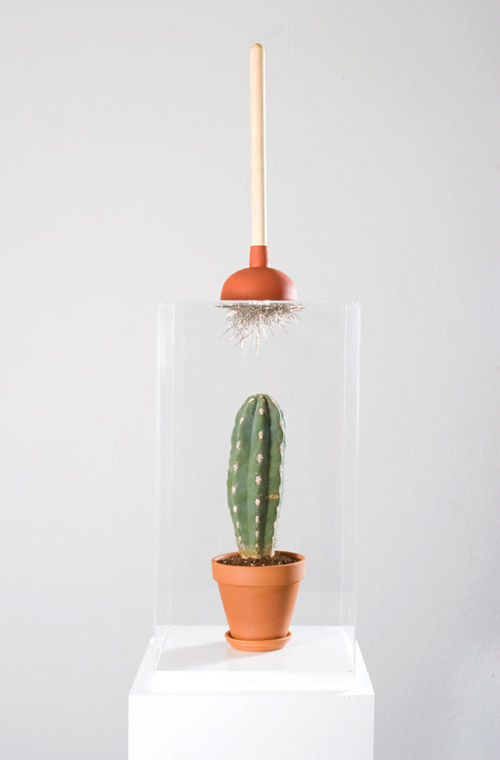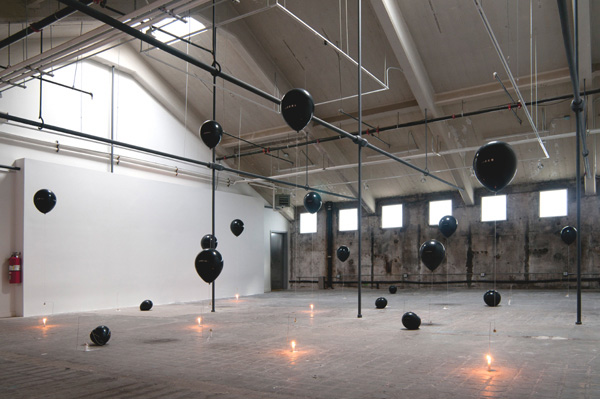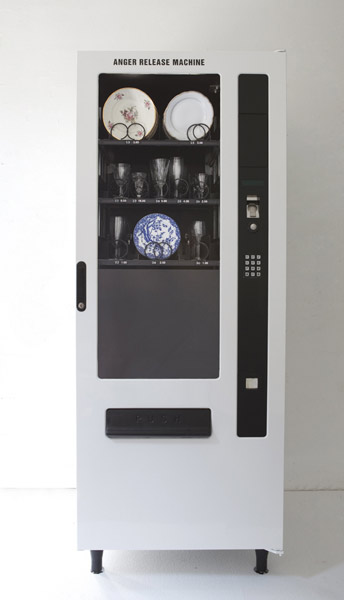
Domestication, 2009
Yarisal & Kublitz is the artist duo Ronnie Yarisal and Katja Kublitz from Switzerland and Denmark, respectively. Working with time-based elements, their ideas are often based on intensifying the moment…”a reminder of the unbearable fragility of the moment.” I was drawn to their deadpan format of storytelling using elements that are stripped down to the core. At the opening to their latest show “Doubter II” at Kunsthalle Galapagos, Ronnie insisted that I must go back to experience the installation without the crowd. He described it as a “happening”, which changes according to the moment. There is certainly a zen quality to their artworks, in which the subject and audience can do nothing but to accept.

Doubter II, 2010 (Candles, balloons, candle snuffers, string, metal. Dimensions variable)
Why do you choose to work as an artist duo?
It wasn’t a decision we deliberately made. We collaborated on a sculpture while studying at college and it turned out great. We worked again on a larger installation for a show that year and everything felt right so we’ve continued working together since.
How does the latest piece “Doubter II” speak in relationship to the space at Kunsthalle Galapagos?
We wanted to use the entire space with a sculpture that would be engaging, without it being directly interactive with the viewer.
‘Time based sculpture’ as we describe it, engages the space because the factors in that space affect the piece directly. Small happenings such as the room temperature, which affects the helium in the balloons, or the cold drafts of air circulating in the space accelerates the burning of the candles and so on. The piece is therefore ‘dependant’ on the space’s functioning, and becomes interactive with the space rather than with the viewer.
Most of your work is based on cause and effect, and audiences get a direct sense of relationship with the artwork. Is that always the intension? And why is that important?
There is a satisfaction in chaos and destruction but especially when it happens within a created perfection. The destruction in our work is often used, as a form that allows an opportunity for realizing that an accepted pattern of thought has no necessity. In that way our work can be seen as a celebration of momentum, but also as a reminder of the unbearable fragility of the moment. When we started out we where very preoccupied with making interactive works of art that focused on the relationship between work and viewer. So a lot of the works we did was a sort of research into finding out about art’s potential for communicating and rousing instinctive reactions from the viewers. Movement seemed a natural tool to do this because it gives the viewer a feeling of being part of an unfolding narrative.
When we are constructing these irrational physical objects with irrelevant functions, we use the movement to construct a time span in which everyday situations and feelings can be channelled into an absurd moment. Besides being preoccupied with the narrative and “happening” elements in movement we also work with movement as a source of transformation. By working with kinetic objects we can let the transformative moment create itself by letting the materials or the audience create the transformation.

Tintenfisch, 2010

Anger Release Machine, 2006/08
What do you enjoy the most out of your artistic practices? And the challenges?
The moment when the work takes on a life of it’s own and you ‘rediscover’ it again.
We have an infinite number of challenges in our practice since most of the works are sophisticated either in their functioning, their materials or their duration. We’ve used eggs in a work recently, which speaks for itself. Our pieces vary in materials and medium almost every time. When we decide to use ice for example, or motors or ceramics, the process of discovering and understanding these new mediums takes time and experimenting, and our biggest challenge lies there, in tackling new situations over and over again.
I love “Uninvited” and “Anger Release Machine“, which both have similar underlying psychologies – an unexpected thrill from sudden bursts of violence. What was the motivation behind these two pieces?
Well, actually they differ from one another, because one plays on a total ‘surprise’ for the viewer, whilst the other plays upon the ‘obvious’ and the ‘expected’ outcome. In “Anger Release Machine” the result is predictable.

Both of you moved to New York after living in European cities. Is New York a transitory place or have you settled?
We currently live in New York now. We lived in many different cities and might continue to do so in the future.
What are you working on now?
Its Christmas so might take a break for a while. We have several shows planned in 2011 so trying to figure out what we will show. Going to LA in February to work on a video piece called “The End”.
Artist Website: yarisalkublitz.com

 RSS
RSS
